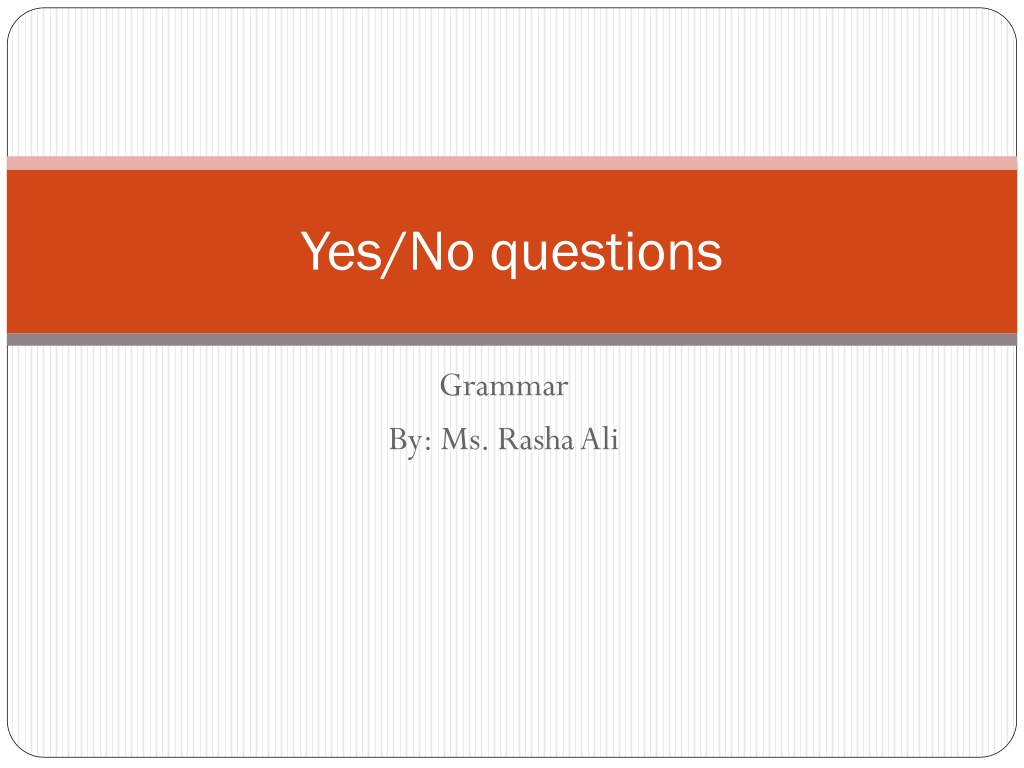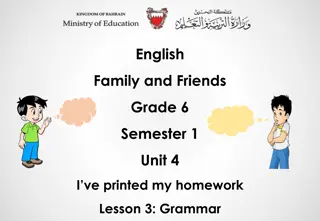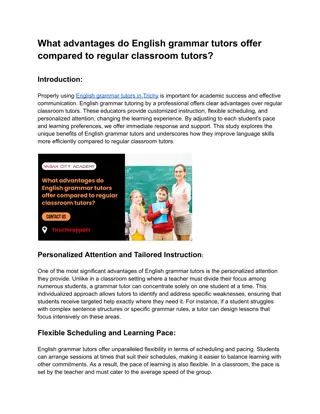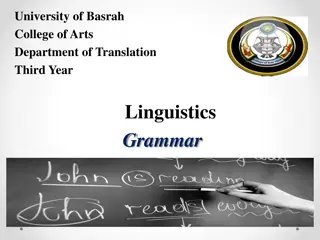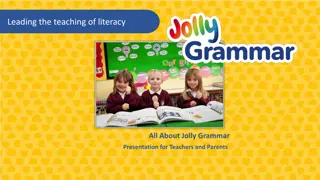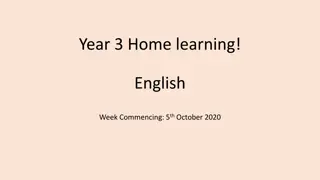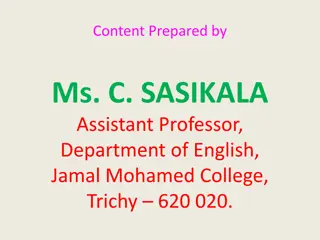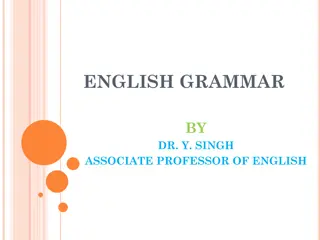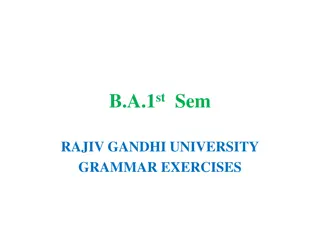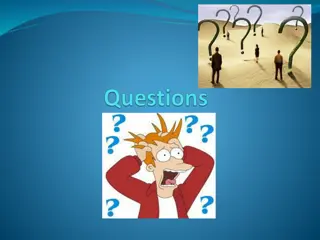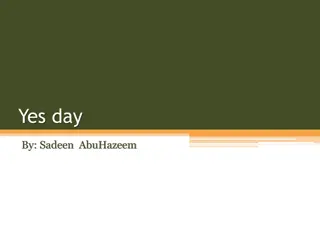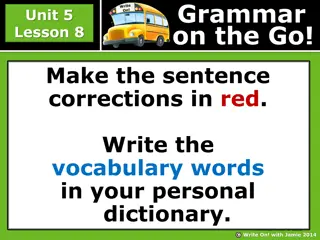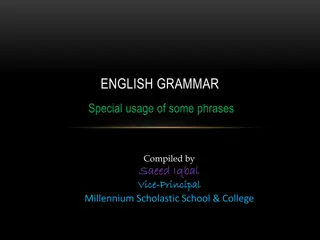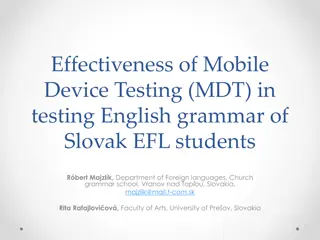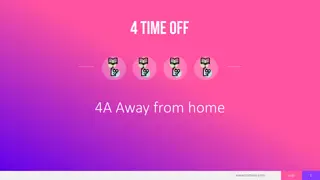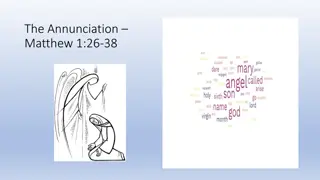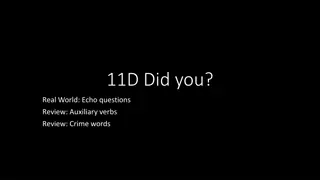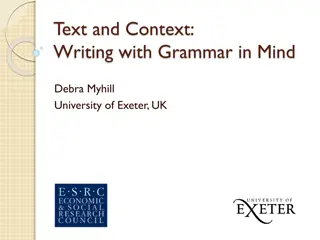Understanding Yes/No Questions in English Grammar
Yes/No questions in English grammar are essential for communication. These questions have two basic types - Yes/No questions and Wh-questions. Yes/No questions, also known as closed questions, have only two possible responses - Yes or No. To form a Yes/No question, verbs like BE, DO, HAVE, or modal verbs are necessary. This guide explains how to construct and respond to various types of Yes/No questions using examples and visual aids.
Download Presentation

Please find below an Image/Link to download the presentation.
The content on the website is provided AS IS for your information and personal use only. It may not be sold, licensed, or shared on other websites without obtaining consent from the author. Download presentation by click this link. If you encounter any issues during the download, it is possible that the publisher has removed the file from their server.
E N D
Presentation Transcript
Yes/No questions Grammar By: Ms. RashaAli
Yes/No questions In English, there are two basic types of questions: Yes / No questions and Wh- questions. Yes / No questions are also called closed questions because there are only two possible responses:Yes or No. When forming a Yes / No question, it must include one of these verbs:BE,DO,HAVE, or a modal verb. It is impossible to ask a Yes / No question without one of these verbs.
Examples incorrect correct Are elections next year? Does he want to stay? Have the boys eaten? Can the dog swim? Elections next year? He want to stay? The boys eaten? The dog swim?
Use the verb BE to ask Yes / No questions about the identity or description of a person, place, or thing. Question Am I your friend? Response Yes. / Yes, you are. / Yes, you are my friend. No. / No, it is not. / No, it is not a good restaurant. No. / No, it wasn t. / No, his idea was not interesting. Yes. / Yes, they were. / Yes, they were happy. Is this a good restaurant? Was his idea interesting? Were they happy? Note that the response can be short (Yes. / No.), or long: Yes or No followed by the subject and verb.
Use the verb BE to ask a Yes / No question about a current activity or situation. This requires the present progressive: BE + (verb+ing). Question Am I going with you and Tom? Is she working today? Are we seeing a play tomorrow? Response Yes. / Yes, you are. No. / No, she isn t. Yes. / Yes, we are.
Use the verb BE to ask a Yes / No question about a past activity or situation. This requires the past progressive: WAS / WERE + (verb+ing). Questions Was it raining? Were they playing? Responses Yes. / Yes, it was. No. / No, they weren t.
Use the verb HAVE to ask if somebody has done something or if some action has taken place. Note that these Yes / No questions use the present perfect (HAVE + past participle). Question Has your brother left? Have you driven before? Responses No. / No, he hasn t. Yes. / Yes, I have.
Use the verb DO to ask Yes / No questions in order to obtain facts about people, places, or things Questions Do they smoke? Does it rain here? Did the key work? Responses No. / No, they don t Yes. / Yes, it does No. / No, it didn t.
Use modal verbs to ask Yes / No questions about possibilities or uncertainties. Questions Can we stay? Reponses Yes. / Yes, we can. / Yes, we can stay. Yes. / Yes, it could (be true). No. / No, they shouldn t (stop). Yes. / Yes you may (help me). Could this be true? Should they stop? May I help you?
